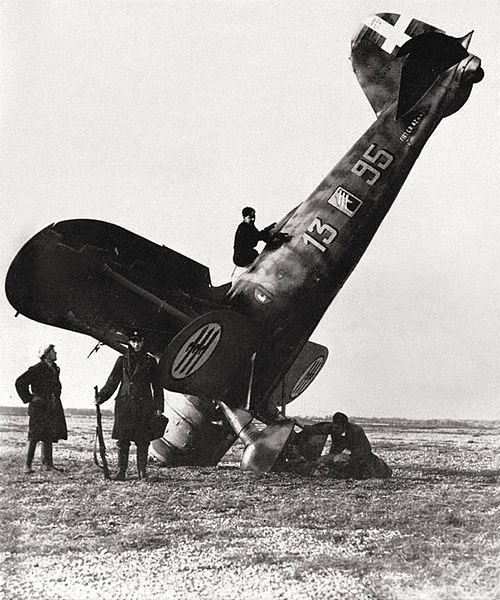
- For PC
- For MAC
- For Linux
- OS: Windows 10 (64 bit)
- Processor: Dual-Core 2.2 GHz
- Memory: 4GB
- Video Card: DirectX 11 level video card: AMD Radeon 77XX / NVIDIA GeForce GTX 660. The minimum supported resolution for the game is 720p.
- Network: Broadband Internet connection
- Hard Drive: 23.1 GB (Minimal client)
- OS: Windows 10/11 (64 bit)
- Processor: Intel Core i5 or Ryzen 5 3600 and better
- Memory: 16 GB and more
- Video Card: DirectX 11 level video card or higher and drivers: Nvidia GeForce 1060 and higher, Radeon RX 570 and higher
- Network: Broadband Internet connection
- Hard Drive: 75.9 GB (Full client)
- OS: Mac OS Big Sur 11.0 or newer
- Processor: Core i5, minimum 2.2GHz (Intel Xeon is not supported)
- Memory: 6 GB
- Video Card: Intel Iris Pro 5200 (Mac), or analog from AMD/Nvidia for Mac. Minimum supported resolution for the game is 720p with Metal support.
- Network: Broadband Internet connection
- Hard Drive: 22.1 GB (Minimal client)
- OS: Mac OS Big Sur 11.0 or newer
- Processor: Core i7 (Intel Xeon is not supported)
- Memory: 8 GB
- Video Card: Radeon Vega II or higher with Metal support.
- Network: Broadband Internet connection
- Hard Drive: 62.2 GB (Full client)
- OS: Most modern 64bit Linux distributions
- Processor: Dual-Core 2.4 GHz
- Memory: 4 GB
- Video Card: NVIDIA 660 with latest proprietary drivers (not older than 6 months) / similar AMD with latest proprietary drivers (not older than 6 months; the minimum supported resolution for the game is 720p) with Vulkan support.
- Network: Broadband Internet connection
- Hard Drive: 22.1 GB (Minimal client)
- OS: Ubuntu 20.04 64bit
- Processor: Intel Core i7
- Memory: 16 GB
- Video Card: NVIDIA 1060 with latest proprietary drivers (not older than 6 months) / similar AMD (Radeon RX 570) with latest proprietary drivers (not older than 6 months) with Vulkan support.
- Network: Broadband Internet connection
- Hard Drive: 62.2 GB (Full client)

Capitano Mario Anselmi, who was squadron leader of the 234 Squadrigilia, decided to escape Italy by flying his CR.42 to neutral Switzerland to the north. On the 10th of September at 13:50 he landed at Magadino, where he was questioned and interned by the Swiss Air Force. The aircraft was transferred to Dübendorf Airbase, and later returned back to Italy in 1947.
(Thanks Commander Adama)

 The CR.42 Falco (“Falcon”) flew for the first time on May 23rd, 1938. Fiat’s chief test pilot Valentino Cus took to the skies over Turin in an aircraft that would become legendary. It was the most advanced biplane fighter around, but unfortunately for the Falco, the age of monoplanes had already dawned.
The CR.42 Falco (“Falcon”) flew for the first time on May 23rd, 1938. Fiat’s chief test pilot Valentino Cus took to the skies over Turin in an aircraft that would become legendary. It was the most advanced biplane fighter around, but unfortunately for the Falco, the age of monoplanes had already dawned.
The success of its predecessor, the Fiat CR.32, in the Spanish Civil War convinced two countries of the importance of maneuverability in air combat. The USSR began developing their I-15 into the I-153 Chaika, and for the Italians, the next step would be the CR.42.
Designer Celestino Rosatelli streamlined his previous design and upgraded the powerplant. The water-cooled V12 of the CR.32 was replaced with a supercharged, fourteen-cylinder air-cooled Fiat radial engine. The design kept the open cockpit and fixed landing gear.
Initial armament consisted of a pair of 7.7mm Breda SAFAT machine guns, soon replaced with two 12.7mm Breda SAFAT heavy machine guns. In addition to that, a pair of 12.7mm machine gun pods were sometimes installed under the wings.
The delightful maneuverability of the Falco was immediately obvious. Once the production variant started reaching units in 1939, the CR.42 was adopted for aerobatic displays. Particularly the roll rate of the sesquiplane was outstanding.
Italy, with the Falco as their main fighter, joined the war on June 10th 1940. The Italians were so satisfied with the Falco’s performance during their two week campaign against France, that they failed to see the dark clouds in the horizon: the Falco was already obsolete.

While the Falco outperformed designs like the Gloster Gladiator over the Mediterranean, a rude awakening came in the Battle of Britain against Hurricanes and Spitfires. The brilliant maneuverability of the biplane impressed the British pilots, but the CR.42s could merely hope to survive those encounters. The agility of the Falco did not allow them to gain the initiative, and the British pilots eventually adopted the dive attack tactics the German Bf 109s had been using against them.
Despite the warning signs, the Italian aviation industry was still committed to producing the Falco, and almost 1,800 CR.42s were made. Most of them were lost during the war over Europe and North Africa.
Other operators of the Falco included Belgium, Sweden, and Hungary, the last of which had respectable success with the design over the Balkans and the Eastern Front.
Surprisingly, the last victory with a Falco was claimed by the Luftwaffe. The Germans operated over 100 CR.42s in various roles, and during a dogfight against American fighters over Croatia on the 8th of February 1945, a Falco pilot claimed to have shot down a P-38. The incident is often cited as the last time a biplane fighter has scored an aerial victory.
The CR.42 is remembered as one of the best biplane fighters ever produced. Unfortunately for the Falco and her pilots, being the best biplane around didn’t help in skies dominated by monoplanes.
The War Thunder Team
Player Skins:
Fiat CR.42 Falco 234-3 by Commander_Adama (used for screenshot) - Captured Falco by BlueBeta - Falco Belgian Air Force by spirou14 - Swedish J-11 Flottilj-9 Fiat cr42 by Thorvald_Gerwulf



